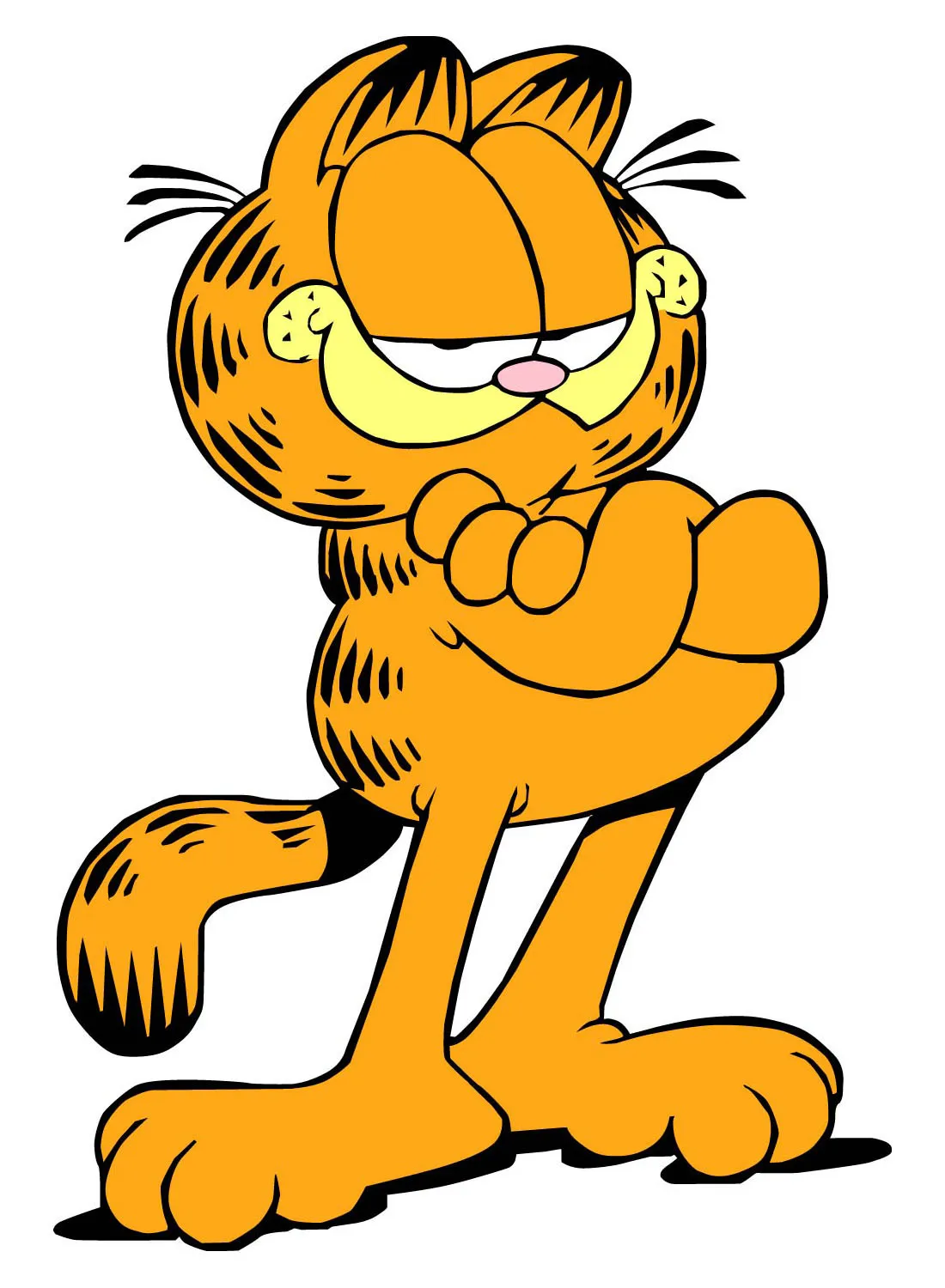Introduction
Garfield, the iconic orange tabby cat known for his love of lasagna and disdain for Mondays, is one of the most recognizable and beloved cartoon characters in the world. Created by cartoonist Jim Davis, Garfield made his debut on June 19, 1978. Over the decades, Garfield has become a cultural phenomenon, appearing in comic strips, television shows, movies, and merchandise. This detailed story delves into the origins, evolution, and impact of Garfield.
Origins and Creation
Jim Davis, born on July 28, 1945, in Marion, Indiana, grew up on a small farm with 25 cats. His early experiences with cats inspired him to create a comic strip centered around a feline character. Before Garfield, Davis had created a comic strip called “Gnorm Gnat,” which ran for five years but failed to gain widespread popularity. Determined to create a successful comic, Davis analyzed the market and noticed that while there were many dog-themed comics, there were few about cats.
Drawing from his childhood experiences and observations of cat behavior, Davis conceptualized Garfield. He named the character after his grandfather, James Garfield Davis, who was known for his gruff demeanor. The character’s design was influenced by the round, chubby look of the Persian cat breed.
The Debut
Garfield made his first appearance in 41 newspapers on June 19, 1978. The original strip introduced Garfield as a lazy, cynical cat living with his owner, Jon Arbuckle, and a dog named Odie. The early strips focused on Garfield’s interactions with Jon and Odie, showcasing his love for food, especially lasagna, and his disdain for diets and exercise.
Character Development
Over time, Garfield’s personality and appearance evolved. In the early strips, Garfield was more cat-like in appearance, with a larger body and smaller eyes. As the strip gained popularity, Davis refined Garfield’s design, making him more anthropomorphic with larger eyes and a more expressive face. This evolution made Garfield more relatable and appealing to readers.
Garfield’s character traits became more defined as well. He was depicted as sarcastic, lazy, and self-centered, often engaging in humorous monologues and witty banter. His love for lasagna became a central theme, and his hatred for Mondays became a recurring joke. These traits resonated with readers, as they reflected common human experiences and emotions.
Supporting Characters
Jon Arbuckle: Garfield’s owner, Jon, is a socially awkward cartoonist who often serves as the butt of Garfield’s jokes. Despite his shortcomings, Jon is depicted as a kind-hearted and caring owner.
Odie: Odie, the lovable but dim-witted dog, was originally introduced as a pet belonging to Jon’s friend Lyman. However, Lyman eventually disappeared from the strip, and Odie became a permanent member of the Arbuckle household. Odie’s cheerful and naive personality contrasts with Garfield’s cynical nature, creating a dynamic and humorous relationship.
Nermal: Known as “the world’s cutest kitten,” Nermal often visits Jon’s house, much to Garfield’s annoyance. Nermal’s cuteness and playful demeanor make him a frequent target of Garfield’s pranks.
Arlene: Garfield’s occasional love interest, Arlene, is a pink cat with a gap between her front teeth. Their relationship is characterized by playful teasing and banter.
Expansion and Media Presence
Garfield’s popularity skyrocketed in the 1980s, leading to numerous spin-offs and adaptations. The comic strip was syndicated in hundreds of newspapers worldwide, and Garfield became a household name. Davis founded Paws, Inc. in 1981 to manage the licensing and merchandising of Garfield, leading to a wide range of products, including books, clothing, toys, and more.
Television and Film
Garfield and Friends: In 1988, Garfield made his television debut with the animated series “Garfield and Friends.” The show ran for seven seasons and featured a mix of Garfield’s adventures and segments from another Davis creation, “U.S. Acres.” The series was praised for its humor and faithful adaptation of the comic strip.
Animated Specials: Several animated television specials were produced, starting with “Here Comes Garfield” in 1982. These specials often aired during holidays and were well-received by audiences.
Live-Action/CGI Films: In 2004, Garfield made his big-screen debut in the live-action/CGI film “Garfield: The Movie,” with Bill Murray providing the voice of Garfield. The film was followed by a sequel, “Garfield: A Tail of Two Kitties,” in 2006. While the films received mixed reviews, they introduced Garfield to a new generation of fans.
Legacy and Impact
Garfield’s enduring popularity can be attributed to his relatable and timeless humor. The character’s sarcasm, love for food, and aversion to work resonate with people of all ages. Garfield has been translated into multiple languages and has a global fanbase.
The comic strip has also been recognized with several awards, including the National Cartoonists Society’s Reuben Award for Outstanding Cartoonist of the Year in 1989. In 2002, Garfield was inducted into the Licensing Industry Merchandisers’ Association Hall of Fame.
Inspiration:
Garfield’s journey from a small comic strip to a cultural icon is a legacy to Jim Davis’s creativity and understanding of human nature. The character’s humor, charm, and relatability have made Garfield a beloved figure for over four decades. As Garfield continues to entertain audiences through various media, his legacy as one of the most iconic cartoon characters of all time remains secure.
Related Topics:
Garfield the Movie 2024: A Feline’s Return to the Silver Screen
#Garfieldhistory, #storybehindGarfield, #JimDavisGarfield, #Garfieldcreation, #Garfieldorigins, #Garfieldcomicstrip #Garfieldcharacterdevelopment #Garfieldtimeline #Garfieldevolution #Garfieldculturalimpact #Garfieldlegacy #Garfieldfunfacts
